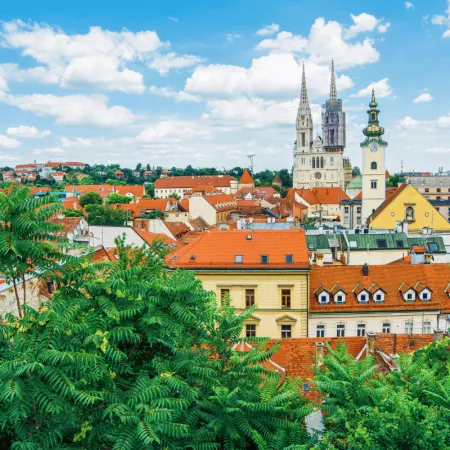Pula Travel Guide
Pula, located in Croatia, is a historic city known for its stunning Roman ruins, beautiful beaches, and vibrant culture. Situated at the southern tip of the Istrian peninsula, Pula boasts a rich history dating back to Roman times, evident in its well-preserved amphitheater and ancient temples. The city's picturesque coastline, crystal-clear waters, and delicious cuisine make it a popular destination for travelers seeking both cultural experiences and relaxation.Top Attractions in Pula
- Arena Pula
- Temple of Augustus
- Kamenjak National Park
- Pula Aquarium
- Arch of the Sergii
Pula is Famous for
Pula is famous for its well-preserved Roman amphitheater, one of the largest and most intact in the world.Top Attractions in Pula
- Explore the ancient Arena Pula
- Marvel at the Temple of Augustus
- Relax on the beaches of Kamenjak National Park
- Discover marine life at Pula Aquarium
- Admire the Roman architecture of Arch of the Sergii
What's Great about Travelling to Pula?
- Rich history and culture
- Beautiful beaches
- Delicious cuisine
What's Not So Great about Travelling to Pula?
- Can be crowded during peak tourist seasons
- Limited public transportation options
- Language barrier for non-Croatian speakers
Travel Tips for Pula
- Check visa requirements before traveling
- Renting a car is recommended for exploring the region
- Be cautious of pickpockets in tourist areas
Important Pula trip information
- Ideal Duration: 3-4 days
- Best Time to Visit: May to September
- Nearby Airports and Railway Stations: Pula Airport and Pula Railway Station
Top 4 Places to visit in Pula
FAQ's on Pula
Q1: What is the best time to visit Pula?
The best time to visit Pula is during the summer months of June to August when the weather is warm, and the city comes alive with festivals and events. However, spring and early fall also offer pleasant weather with fewer crowds, making it ideal for sightseeing.
Q2: Do I need a visa to travel to Pula?
Travelers from most countries in the EU, the US, Canada, Australia, and many other countries do not need a visa for short visits to Pula. However, it's essential to check specific visa requirements based on your nationality before traveling.
Q3: What are the must-visit attractions in Pula?
Some of the must-visit attractions in Pula include the iconic Roman Amphitheatre, the Temple of Augustus, the Archaeological Museum of Istria, and the Brijuni Islands National Park for nature lovers.
Q4: Is Pula a safe place to travel?
Pula is generally a safe destination for travelers. It is advisable to take standard precautions against petty theft and to be aware of your surroundings, especially in crowded tourist areas.
Q5: What is the local currency in Pula and can I use credit cards?
The local currency in Pula is the Croatian Kuna (HRK). Credit cards are widely accepted in hotels, restaurants, and larger stores. It's recommended to carry some cash for smaller establishments and local markets.
Q6: What is the local cuisine like in Pula?
Pula offers a delightful culinary experience with dishes like Istrian prosciutto, seafood delicacies, truffle-infused dishes, and traditional pasta like fuži. Don't miss trying local wines and olive oils for a complete gastronomic journey.
Q7: What transportation options are available in Pula?
Pula has a well-connected public transport system with buses and taxis readily available. Renting a car is also a popular choice for exploring the region, especially if you plan to visit remote areas or attractions.
Q8: Are there any cultural norms or etiquette I should be aware of when visiting Pula?
When visiting Pula, it's essential to respect local customs like greeting people with a handshake, dressing modestly when visiting religious sites, and being mindful of noise levels in residential areas. Tipping is appreciated but not mandatory.
Q9: I am a travel agent. How can I buy travel leads of Pula?
Register yourself as a travel agent at agents.tripclap.com and then you can buy travel leads to Pula once your account is approved. For more details contact our support team at +91-8069186564 or support@tripclap.com

